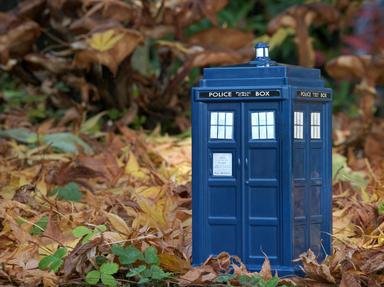Quiz Answer Key and Fun Facts
1. What does the acronym TARDIS stand for?
2. The TARDIS is deceptively spacious inside and has a free-standing control console in the console room with its roundel-decorated walls. What shape is the console?
3. Why did the TARDIS appear as a 1960s police box in the first episode?
4. On what basis did the Metropolitan Police take action in 1996 against the BBC regarding the TARDIS?
5. Why does the TARDIS have so many navigational issues?
6. In "The Robots of Death", what explanation does the Doctor give for why the TARDIS is larger on the inside compared to the outside?
7. How did the Doctor and the TARDIS join forces?
8. Time travel in the TARDIS is generally depicted by a fading out in one location followed by a fading in at another. As written in the "Doctor Who Magazine" comic strips, what onomatopoeic phrase does the TARDIS make when doing this?
9. How is entry normally gained to the TARDIS?
10. The TARDIS has also appeared or been heard in other BBC TV series. Which is one of these spin-off series?
Source: Author
suomy
This quiz was reviewed by FunTrivia editor
ladymacb29 before going online.
Any errors found in FunTrivia content are routinely corrected through our feedback system.
